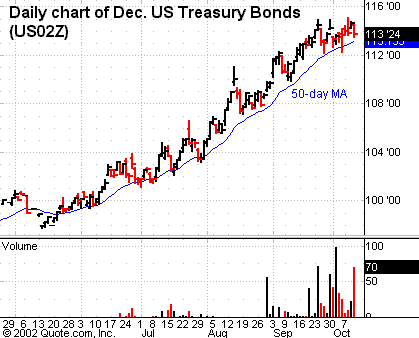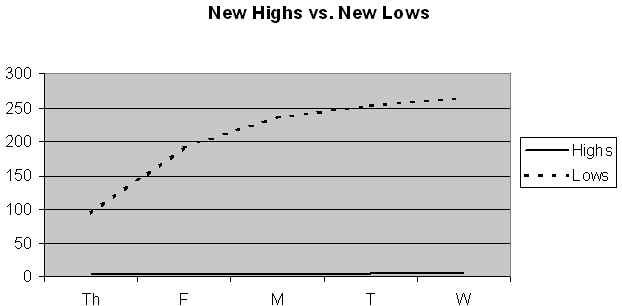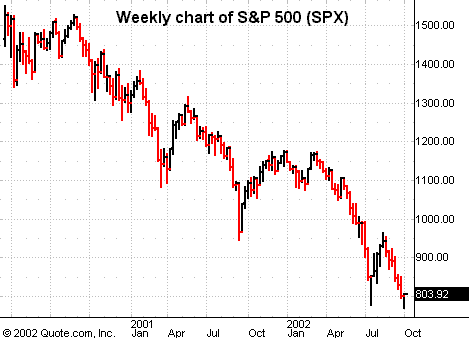No Catalyst Or Resolution To Deflation-Reflation Battle Yet
Last
week in this column we talked at length about the battle between
deflation and reflation that needs at least some intermediate-term catalyst to
resolve itself in the minds of investors, before we get any kind of solid,
catchable rally. So far, the ECB has
neglected to ease, and the Fed is unlikely to do so before Nov. 6, when we
would expect easing. That’s a lot
of uncertainty and it leads to markets drifting lower in a high-risk
environment.
-
Japan has not
clarified its reflationary policy. If
it follows through on significant purchases of corporate assets by the Bank of
Japan, the yen and JGBs are likely to be ultimate casualties, as this policy
would amount to pure inflation and an export of deflation to the rest of the
world.
 -
China’s boom
continues, but it continues to be biased toward exports, as it is likely to
remain for a decade or more, and this means intensified deflationary force
coming from China to the rest of the world.
 -
Oil prices continue
high, mired in a sea of uncertainty, and high prices are hitting already weak
global economies hard, helping deflationary forces by weakening growth and
potential growth.Â
The counter-balance
against the above-mentioned deflationary forces are expansionary monetary and
fiscal policies. Maastricht and the ECB’s focus solely on past inflation numbers are
curtailing Europe’s ability to fight deflation. It is significant that the German stock market has led the current
decline and has fallen significantly below its July lows already. Will deflation take hold of Germany and then Europe before the ECB clues
in?
Slashing interest
rates at a record pace has, so far, allowed housing and consumption trends in the
US to remain strong and exhibited a counter-balance for the rest of the world
to deflationary pressure via the US’s massive trade deficit. This has created
a near stalemate in the war between reflation and deflation that is the
dominant global macro theme that investors must watch carefully. The question now is whether the Fed can ease quickly enough and sharply
enough to stop deflation from overrunning the domestic economy as well as the
global economy.Â
The situation
remains that the two likely primary keys to the global economic and market
outlook are central bank policy stimulus timing, combined with the markets’
reaction to them, and swings in the price of oil.Â
A sharp change in the oil supply available could force crude prices
substantially higher and issue a devastating blow to an already fragile global
economy, thereby crushing global equity markets.Â
Conversely, a quick victory in Iraq could cause the war-premium in oil
markets to be quickly retraced and this would be a strong stimulus to global
growth and to global stock markets.
Continue to watch for clues that reflation is working on the US market over the
intermediate-term, like another breadth thrustÂ
such as a 9:1 up/down volume day, the 5-day moving average of advancing
volume to be 77% or more of total volume, an 11-day A/D ratio of 1.9 or more, or
a 10-day A/D ratio of 2 or more. Such
evidence of breadth is unlikely without a major positive catalyst, like a Fed
rate cut or a successful war operation. But
realize that even if the Fed begins to win the war on deflation here, until the
wild card in Iraq is clear, any such evidence of victory could be
short-circuited.
We still will be
watching for a possible low between late summer and early winter in the market,
followed by a better rally than we’ve seen since March 2000 — a “B†wave
rally for Elliotticians. However, until breadth turns much stronger, further economic crisis will likely be needed
to kick global central bankers into the concerted action that is probablyÂ
needed to help fuel such a rally. And
so, absent new war news and news of further monetary stimulus, the bias of the
market is down. Yet large
allocations to shorts when an overnight war or central bank move could lead to a
sharp rally, also seems excessive risk for the potential return.Â
Bond prices are
tracing out a potential short-term triple top, but until this pattern is
confirmed by a breakdown below 112 basis Dec. bonds and 114 basis Dec.Ten-year
notes. Any reaction in bonds is unlikely to be enough to confirm a decent rally
in stocks, and global bonds remain at levels that are discounting further
economic weakness. Remember that in
a deflationary environment, bonds will need to DECLINE to fuel a rally in stocks,
as both are simply reacting to changes in economic growth perceptions.Â

Corporate yield
spreads are still levels that are discounting a near depression (in fact, yield
spreads are so high now and value so prevalent in corporate bonds that should a
recovery develop, these may make a better holding than stocks, as they did from
1991 to 1995). In addition,
Asian markets and economies are now showing signs of weakening. Oil prices, rising in response to war risks, are acting as a drag on
Asian, and global economies. Commodity
prices show a mixed picture, but are also not inconsistent with further economic
retrenchment. Gains, softs, and
oils are indeed fueling higher overall commodity prices, but each of these moves
is in response to supply shortages, not increased demand fueled by stronger
economic growth.
Therefore we
continue to suggest investors wait and watch for more indications of better
breadth and a better risk/reward mix on a large number of fronts. Most importantly, wait for a much larger number of new highs on our lists
and breakouts of valid 4+ week consolidations in stocks that at least almost
meet our criteria, before thinking of allocating aggressively to this market.
Until we get
substantially better evidence of a potential rally, our strategy remains ultra
defensive, but continues to slug out small gains. Since March 2000 the world index is down over 45%, the S&P over
48%, the IBD mutual fund index is down over 62%, and the Nasdaq has crashed over
76%. Meanwhile since March 2000 the
long/short strategy we summarize and follow-up each week in this column has made
more than 38% on a worst drawdown of under 6%.Â
While this performance is certainly underperforming our long-term
growth rate, and it is hardly thrilling to have been so heavily in cash since
March of 2000, we have managed to eke out gains with very low risk in a very
dangerous market environment where 9 out of 10 traders have been big losers. We will hope and watch for a better environment, but wait patiently until
it arrives before risking significant capital.Â
Â

Our official model
portfolio overall allocation remains EXTREMELY DEFENSIVE. We’re now 92% in T-bills awaiting new opportunities. Our model
portfolio followed up weekly in this column was up 41% in 1999, up 82% in 2000
and up 16.5% in 2001 — all on a worst drawdown of around 12%. We’re
now up around 7.47% for the year 2002. Let’s wait for a bit better environment before positioning heavily.
Top
RS/EPS New Highs never
mustered up one single solid week of consistent +20 or higher readings since the
7/24 lows. Readings this week were
pathetic again at 3, 5, 3, 5, and 7, accompanied by just 4 breakouts and no
close calls. Bottom
RS/EPS New Lows managed the best week consistently above 20 consistently
since 7/24 this week, with readings of 95,
192, 236, 252, and 264, accompanied by 46 breakdowns of 4+ week consolidations,
and a few close calls.  The
downside is clearly dominating, but the quality of new lows is still somewhat
poor, and the risk/reward of significant allocation in either direction is not
good given the global macro-economic backdrop.
For those not
familiar with our long/short strategies, we suggest you review my 10-week
trading course on TradingMarkets.com, as well as in my book The
Hedge Fund Edge, course “The Science of Trading,” and new
video seminar most of all, where I discuss many new techniques. Basically,
we have rigorous criteria for potential long stocks that we call
“up-fuel,” as well as rigorous criteria for potential short stocks
that we call “down-fuel.” Each day we review the list of new highs on
our “Top RS and EPS New High List” published on TradingMarkets.com for
breakouts of four-week or longer flags, or of valid cup-and-handles of more than
four weeks. Buy trades are taken only on valid breakouts of stocks that also
meet our up-fuel criteria.Â
Shorts are similarly taken only in stocks meeting our
down-fuel criteria that have valid breakdowns of four-plus-week flags or cup and
handles on the downside. In the
U.S. market, continue to only buy or short stocks in leading or lagging
industries according to our group and sub-group new high and low lists. We
continue to buy new signals and sell short new short signals until our portfolio
is 100% long and 100% short (less aggressive investors stop at 50% long and 50%
short). In early March of 2000, we took half-profits on nearly all positions and
lightened up considerably as a sea change in the new-economy/old-economy theme
appeared to be upon us. We’ve been effectively defensive ever since.
Upside breakouts
meeting up-fuel criteria (and still open positions) so far this year are: NONE. Continue to watch our NH list and buy flags or cup-and-handle breakouts
in NH’s meeting our up-fuel criteria — but be sure to only add names that are
in leading groups, and now only add two trades per week once again until the
market environment improves.
On the short side
this year, we’ve had breakdowns from flags (one can use a down cup-and-handle
here as well) in stocks meeting our down-fuel criteria (and still open
positions) in Celera Genomics
(
CRA |
Quote |
Chart |
News |
PowerRating)Â
@9.09 (7.14) w/ 8.5 ops. Continue to watch our NL list
daily and to short any stock meeting our down-fuel criteria (see 10-week
trading course) breaking down out of a downward flag or down
cup-and-handle that is in a leading group to the downside, but only add up to two
in any week (and only in the weakest groups) until we get better breadth numbers
on the downside and better leadership.
Â

Patience is one of
the most difficult and frustrating lessons a trader must learn to be successful. These markets are an extreme test of it. Particularly
when breadth numbers are not tilting their hat strongly in any direction,
investors need to maintain high amounts of cash and wait for real low-risk,
high-reward opportunities before risking precious capital. Watch the breadth and leadership numbers the market gives off first and
primarily, and everything else secondarily.Â
We will continue to try and navigate these treacherous markets aiming for
decent gains with relatively low-risk and safety. Please stay tuned, now more than ever,
and emphasize the importance of
patience.
Mark
